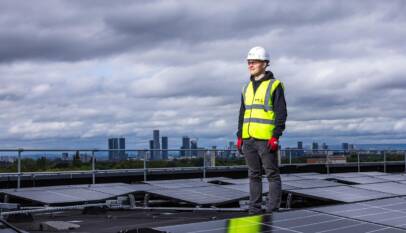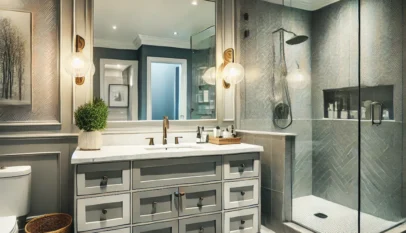
Solar panel cladding is a technique that integrates solar panels directly into building exteriors, such as walls or facades. It serves both as a protective covering and an energy-generating surface, making it a practical solution for sustainable construction.
This method maximizes space efficiency by combining the roles of cladding and solar energy production. It also offers architectural flexibility, allowing buildings to maintain aesthetic appeal while reducing electricity costs.
For those interested in reducing carbon footprints without compromising design, solar panel cladding presents a valuable option. Understanding its benefits and applications can help decide if it fits a particular building project or retrofit.
Understanding Solar Panel Cladding
Solar panel cladding involves adding protective or functional layers to solar panels. It improves durability, weather resistance, and often enhances energy efficiency through specialized materials and designs.
What Is Solar Panel Cladding
Solar panel cladding is a layer or combination of layers that cover the surface or edges of solar panels. It protects the panels from environmental damage like moisture, dust, and UV degradation.
This cladding can also contribute to structural strength, reducing risks of cracks or physical damage during installation or in harsh weather conditions. Sometimes, it integrates aesthetic elements for better architectural blending.
The materials used range from glass and polymers to metals, chosen based on their protective qualities and compatibility with solar cells.
How Solar Panel Cladding Works
Cladding acts as a barrier between the solar cells and the external environment. It prevents water and dirt ingress, which can reduce panel efficiency or cause electrical faults.
Certain cladding types include coatings that boost light transmission, allowing more sunlight to reach the cells while preventing reflection loss. Others have insulating properties, helping maintain optimal operating temperatures.
Installation typically involves laminating the cladding onto the panel surface or mounting it as an outer shell. Proper sealing and adhesion are essential to ensure longevity and reliable function.
Types of Solar Panel Cladding
Common cladding types include:
- Tempered Glass: Offers high durability, scratch resistance, and excellent light transmission. It is the most widely used cladding for traditional panels.
- Polymer Films: Lightweight and flexible, polymers like ETFE or TPT provide waterproofing and UV protection. Suitable for lightweight or flexible panels.
- Metal Cladding: Aluminum or steel sheets provide robust protection and structural integrity, often used in building-integrated photovoltaics.
Each type balances protection, weight, cost, and solar efficiency differently. The choice depends on specific use cases and environmental conditions.
Benefits and Applications of Solar Panel Cladding
Solar panel cladding improves building performance by enhancing energy efficiency and allowing seamless design integration. It serves diverse functions in both commercial and residential environments. The use of this technology brings practical benefits while supporting modern architectural demands.
Energy Efficiency Advantages
Solar panel cladding converts sunlight directly into electricity, reducing dependence on grid power. It helps lower energy bills by generating renewable energy on-site.
These claddings often include integrated insulation layers, which improve thermal performance. This reduces heating and cooling costs by maintaining stable interior temperatures.
The panels can be oriented to maximize sun exposure, boosting energy output throughout the day. In some cases, the cladding also shields the building facade from weather damage, extending structural longevity.
Architectural Integration
Solar panel cladding is designed to blend with building aesthetics. Panels come in varied shapes, sizes, and colors, allowing architects to maintain design intent without visible disruption.
It enables the creation of sleek, modern exteriors that function both as protective skins and energy generators. The material can be applied to walls, roofs, and facades, expanding creative options.
By using solar panels as cladding, buildings achieve a dual function: energy production and weather protection. This reduces the need for separate outer layers, saving space and materials.
Commercial and Residential Uses
In commercial buildings, solar panel cladding supports sustainability targets and reduces operational costs. Offices, retail spaces, and factories use it to lower energy consumption and improve green credentials.
Residential applications include homes and apartment complexes, where cladding supplies clean energy and enhances curb appeal. The panels can be customized to fit various architectural styles.
Multifunctional cladding also serves in public infrastructure, such as schools and hospitals, offering long-term savings and environmental benefits. The technology is adaptable for new builds and retrofits alike.
| Use Case | Key Benefit | Typical Application |
| Commercial | Energy savings, branding | Office buildings, malls |
| Residential | Reduced utility bills, design | Houses, condos |
| Public Sector | Cost efficiency, sustainability | Schools, hospitals |
House for Sale at Mississauga: Top Listings and Market Insights
Many buyers are interested in finding a house for sale in Mississauga due to its diverse n…








